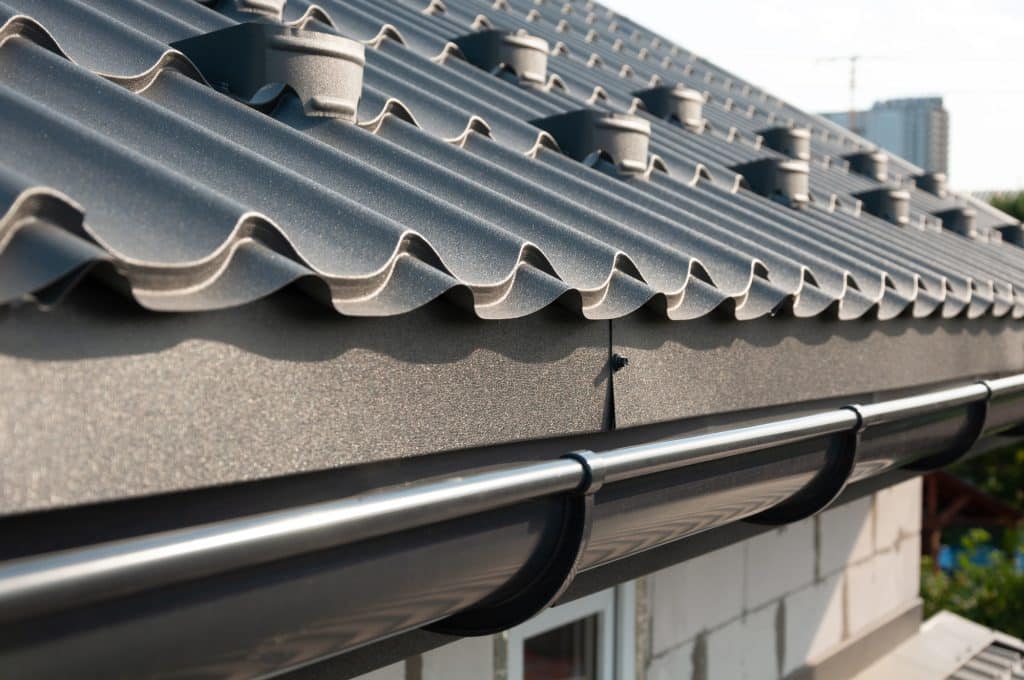Green Living: How Metal Roofing Contributes To An Eco-Friendly Home
In the pursuit of a more sustainable and eco-friendly lifestyle, every choice made can profoundly impact the environment. One often overlooked aspect is the selection of roofing material for a home.
Metal roofing emerges as a superior green choice, offering many benefits that extend far beyond conventional roofing options. It affords the opportunity to reduce your carbon footprint while embracing energy efficiency, longevity, and recyclability.
Eco-Friendly Benefits Of Metal Roofing
The concept of green living extends beyond the mere act of recycling plastics or reducing water usage; it’s about incorporating sustainability into every facet of life, including the very shelters in which people reside. A significant statement is made by opting for metal roofing—committing to responsible living and environmentally conscious decisions that harmonize with the ecosystem.
Contractors for roofing play a pivotal role in ensuring the seamless installation and longevity of metal roofs, aligning with sustainable practices from the outset. Their expertise contributes to the overall eco-friendly impact of this choice.
-
Longevity
Depending on the material, metal roofing can endure up to 70 years, significantly outlasting many conventional roofing materials like asphalt, which typically need replacement every 15 to 20 years. This extended lifespan decreases the frequency of roof replacements, aiding in the conservation of resources and minimizing waste in the long run.
The inherent durability of metal implies less frequent repairs and maintenance, leading to a notable decrease in resource utilization and expenses over time. Moreover, the extensive lifespan of metal roofs Wisconsin means less construction waste ends up in landfills.
This direct contribution to waste reduction supports environmental preservation and aligns seamlessly with the principles of sustainable living. It subsequently reduces the overarching ecological impact of your home.
-
Energy Efficiency
Metal roofs are notable for their reflectivity, repelling a substantial amount of the sun’s rays and, as a result, lessening the heat absorbed by your home. This reflective attribute helps maintain equilibrium in indoor temperature, minimizing reliance on air conditioning and energy consumption.
Reduced energy consumption enables a decrease in greenhouse gas emissions, positioning you as a caretaker for the environment. The integration of cool-roof technology with metal roofing furthers energy efficiency.
This innovative technology employs special coatings that reflect more sunlight and absorb less heat, optimizing energy preservation and providing a sustainable solution that complements green living.
-
Recyclability
Most metal roofs contain up to 95% recycled content and are 100% recyclable at the end of their lifespan. A circular economy is fostered by choosing metal roofing, where materials are reused and recycled, thereby reducing waste and mitigating environmental degradation.

When your metal roof concludes its lifecycle, it doesn’t become a source of waste. Instead, it can be entirely repurposed, echoing sustainable living principles and propelling the conservation of resources and energy, which, in turn, fortifies the overall well-being of the planet.
-
Lightweight Nature
Metal roofs are markedly lighter compared to counterparts like concrete and tile roofs. This feature helps maintain the structural integrity of a home, ensuring its longevity and diminishing the need for extensive renovations and rebuilds, thus preserving resources.
The preservation of structural integrity due to reduced stress on your home’s foundation enhances its lifespan and promotes sustainability. This structural benefit offers peace of mind and aligns with eco-friendly housing principles, emphasizing the preservation of materials and energy.
-
Fire Resistance
With a Class A fire rating, metal roofs, being non-combustible, offer the highest level of fire resistance. In areas where wildfires are prevalent, a metal roof can act as a protective barrier, reducing the risk of fire propagation. This protective feature not only safeguards a home but also defends the surrounding environment from potential destruction.
Choosing a fire-resistant roofing material aids in averting the catastrophic environmental impacts of wildfires. This conscious choice signifies a commitment to environmental preservation, mitigating risks associated with fire incidents, and protecting biodiversity.
-
Ideal For Rainwater Harvesting
The smooth and impervious nature of metal roofs renders them ideal for rainwater harvesting systems. Implementing such systems reduces reliance on municipal water supplies and champions water conservation. Collecting and utilizing rainwater for household needs facilitates the sustainable management of water resources.
Rainwater collected from metal roofs is typically cleaner and suffers less contamination compared to other roofing materials. This facilitates the use of rainwater for various domestic purposes, endorsing water conservation and alleviating the burden on local water supplies, crucial for maintaining ecological balance.
-
Minimal Maintenance
Regular inspections and occasional cleaning are predominantly all that’s needed to maintain a metal roof in optimal condition. This reduced need for maintenance saves resources and time, allowing focus on other eco-friendly practices.
The reduction in maintenance also means a decrease in the usage of cleaning products, many of which contain environmentally harmful chemicals. Opting for such a low-maintenance roofing alternative reduces chemical runoff, aiding aquatic ecosystems and supporting overall environmental health.
-
Weather Resistance
Offering supreme resilience to adverse weather conditions such as heavy rain, snow, hail, or high winds, metal roofing ensures its longevity and minimizes the need for replacements and repairs. Employing weather-resistant roofing material results in a reduction in resource utilization and waste generation.
The robust nature of metal roofing offers enhanced protection during extreme weather events, extending the life of your home and mitigating the environmental repercussions associated with frequent renovations and repairs, emphasizing your commitment to sustainability and eco-friendly living.
-
Enhanced Aesthetic Appeal
Beyond its functional benefits, metal roofing provides diverse styles, colors, and finishes to augment the aesthetic appeal of your home, allowing for a balance between elegance and eco-friendliness. The versatility in design fosters harmony between your home and its surroundings, creating a sense of unity with nature.
This integration of aesthetic value with sustainability signifies that green living doesn’t necessitate a compromise on style or beauty. This balanced approach underscores respect for the environment, intertwining ecological mindfulness with architectural elegance while contributing to ecosystem well-being.
-
Noise Reduction
A meticulously installed metal roof significantly mitigates noise pollution, creating a serene and tranquil living environment. Minimizing the intrusion of external noises leads to a quieter home, enhancing well-being and diminishing stress levels.
Addressing noise pollution, an often-underappreciated environmental concern, signifies a value for tranquility and contributes to the establishment of harmonious living spaces, pivotal for overall ecological health and well-being.
Conclusion
By opting for metal roofing, you embody a comprehensive approach to green living, enhancing the environmental stability of your surroundings and minimizing your ecological footprint. This choice not only preserves your home’s structural and aesthetic integrity but also serves as a steward for the environment, fostering harmonious coexistence with nature.
Consider metal roofing as a tangible step toward a more sustainable future. Every effort toward sustainability is monumental, and your decisions can significantly influence the cultivation of a healthier, more balanced ecosystem.







